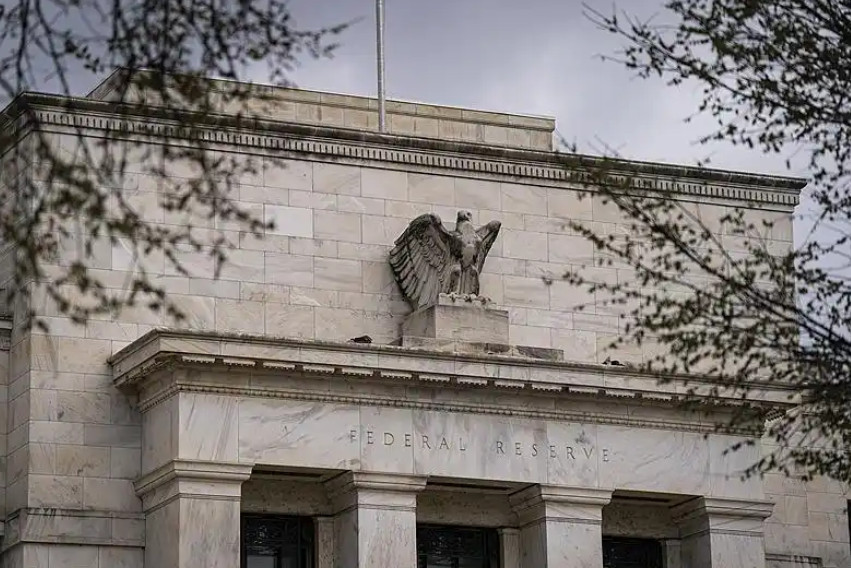
The latest brown book from the Federal Reserve shows that from late May to early July 2025, the US economy will exhibit moderate growth but significant regional differentiation. Among the 12 Federal Reserve districts, 5 regions showed slight or moderate growth in economic activity, 5 regions remained stable, and 2 regions experienced a slight decline. This differentiation pattern is reflected in areas such as employment, prices, and consumption, reflecting the continuous adjustment of the US economy in policy uncertainty and structural contradictions.
The differentiation of economic activities is directly reflected in regional contribution. The western coastal areas, relying on their technological advantages, contributed 60% of the national growth, while the central plain areas only grew by 0.3%. The job market also presents structural contradictions: the number of new jobs in the technology industry increased by 4.2% year-on-year, while the number of jobs in the manufacturing industry decreased by 1.8%. The labor shortage problem is particularly prominent in the construction and agriculture sectors, with the Dallas Federal Reserve report stating that "tightening immigration policies has led to a 30% reduction in seasonal workers," directly driving up labor costs. The response strategies of enterprises have shown differentiation, with 25% of surveyed enterprises choosing to reduce recruitment demand through automation and AI, while 15% of enterprises adopt a combination strategy of "increasing starting salary+signing bonus".
Price data reveals alarming signs of a resurgence of inflation. The year-on-year increase in raw material costs in the manufacturing industry reached 12.7%, while the cost of steel in the construction industry increased by 23.4%. The cost shifting strategy of enterprises presents new characteristics: 68% of enterprises choose "partial price increase+profit compression", and 22% of enterprises implement "surcharge system". This price transmission mechanism has had a substantial impact on the consumer end, with core CPI increasing by 2.9% year-on-year in June, clothing prices rising by 4.1%, and furniture prices rising by 3.8%, indicating that tariff shocks are beginning to penetrate into end consumption. Energy prices have become an important driver of inflation, with energy commodity prices rising by 1.0% month on month in June. Electricity prices rebounded due to high summer temperatures and the recovery of gas exports. After the Trump administration imposed a 25% tariff on Chinese steel, domestic steel prices in the United States have risen by 34%, directly driving up production costs in the automotive and construction industries.
The consumer market is under dual pressure of a decline in non automotive spending and a decrease in car buying. In May, non automotive retail sales decreased by 1.3% year-on-year. After experiencing the "tariff grabbing" trend in the first quarter, the sales volume of the automotive market fell to 15.2 million vehicles in the second quarter, a year-on-year decrease of 4.8%. This shift in consumption patterns has been validated in credit card data: non essential consumption overdrafts decreased by 7.3% in May, while food consumption increased by 2.1%. The investment sector is also facing structural adjustments, with the manufacturing PMI remaining at 51.2, but the new orders index falling to 49.8. The "ice and fire" situation in the real estate market is particularly significant: residential sales decreased by 5.4% year-on-year, while commercial real estate investment increased by 8.3% year-on-year, and data centers and warehousing facilities have become new hotspots.
Faced with a complex economic landscape, the Federal Reserve's policy stance is caught in a dilemma. The number of mentions of "uncertainty" in the Beige Book has decreased from 80 to 63, indicating a slight improvement in corporate sentiment. However, the FOMC meeting in July still chose to pause interest rate cuts and maintain the federal funds rate in the range of 4.25% -4.50%. The market has divergent expectations for future policies, with the CME FedWatch tool showing that the probability of a 25 basis point rate cut in September has decreased from 65% to 48%. This policy uncertainty is directly reflected in financial market volatility, with the US dollar index rising 0.79% to 97.35 in July and gold prices falling 1.2% to $1945 per ounce.
The response strategies of enterprises have shown significant differentiation, with large multinational corporations launching the "China+1" supply chain restructuring, while small and medium-sized enterprises rely more on "price surcharges" and "inventory management". The technology industry has shown strong resilience, indicating that the AI industry still maintains high growth momentum. This structural difference is confirmed in the employment data, with 187000 new non farm jobs added in July, of which the technology industry contributed 42000 and the manufacturing industry only added 8000.
The current economic situation validates the hypothesis of "natural slowdown", but its sustainability is questionable. The Atlanta Fed's GDPNow model predicts a 2.4% growth in the third quarter, but forward-looking indicators show concerns: the manufacturing new orders index fell to 49.8 in June, and consumer confidence index fell to 98.7. The willingness index for enterprise equipment investment decreased from 53.2 to 48.9, indicating a cautious trend in capital expenditures. The changes in the global trade pattern have added new variables, with the EU and the US reaching a "limited tariff agreement". However, Canada's countermeasures against Chinese steel have led to an 18% increase in the cost of US steel imports. Geopolitical risks cannot be ignored either. The escalation of the Thailand Cambodia border conflict has led to a decrease in the stability of the Southeast Asian supply chain, and the cost of electronic products imported by the United States from the region has increased by 5.7%.
The most profound revelation in this economic transformation may be that as structural contradictions replace cyclical fluctuations as the dominant force, the effectiveness of traditional macroeconomic control tools is weakening. The Fed's brown book not only reveals the current economic situation, but also a microcosm of a turning point in the era - in the new era of globalization and technological revolution intertwined, the US economy is experiencing the most complex transformation pains in 40 years.

The 7th EU-African Union Summit was held in Angola from November 24th to 25th.
The 7th EU-African Union Summit was held in Angola from Nov…
On November 26, 2025, in the biting cold of Washington, D.C…
In the midst of a global wave of technological advancement,…
In November 2025, the revelations by Reuters and Bloomberg …
The Dominican Republic recently announced that it will allo…
On November 26, 2025, the European Central Bank (ECB) relea…